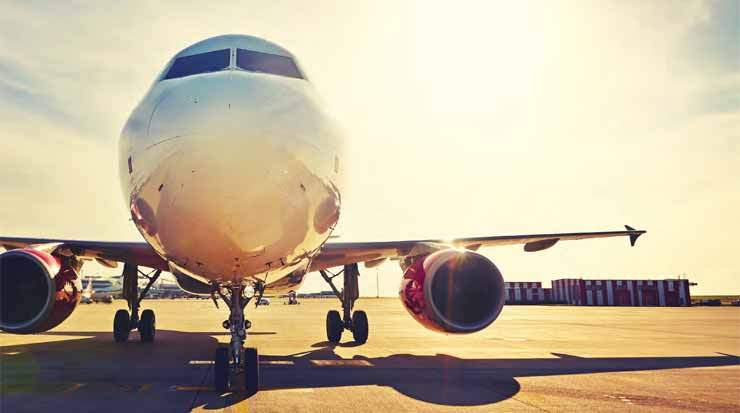In their report, Low Cost Carriers (LCCs) in the Middle East and North Africa: Prospects and Strategies, William Morrison and Keith Mason pinpoint that during the last eight years, MENA has experienced a notable increase in the volume of travellers both within the Arab regions as well as to and from other parts of the world, including Asia Pacific, Europe and the Americas. According to the authors, this development was largely fuelled by the emergence of regional carriers offering long-haul flights to international destinations.
The remarkable growth of full service carriers (FSC) such as Emirates, Etihad Airways and Qatar Airways, in line with stronger passenger demand, offered a fruitful ground for the commencement and expansion of regional LCCs as well.
GETTING BIGGER
Air Arabia was the first LCC to launch in the region in 2003, with Sharjah International Airport being its initial and predominant hub of operations. Air Arabia Group generated a solid net profit of AED472 (USD128.5 million) during the first nine months of 2015.
Most notably, LCCs have certainly established their mark at airports that were previously vastly dominated by FSCs. For instance, among the awards that Air Arabia received during 2015, one of them was Airline of the Year – Middle East, at the Aviation Business Awards, whilst Salalah Internatioanl Airport has praised the operator as Top passenger carrier at Salalah Airport and Top airline by growth at Salalah Airport at the Annual Oman Airport Management Company (OAMC) awards. Air Arabia Jordan’s base, Queen Alia International Airport (QAIA) welcomed 820,000 travellers in July alone, up 9.7 percent over the corresponding period in 2015.
Conversely, flydubai emerged through the initiative of the government of Dubai in 2008, and commenced its inaugural flight in 2009, from Dubai International, the emirate’s largest hub.
During 2015, the airline carried more than nine million travellers, signifying a 25 percent boost compared to 2014. In addition, 18 new destinations were included in the carrier’s network.
Besides its operations at Dubai International, flydubai is currently conducting 35 weekly flights to five destinations from Dubai World Central, with plans of increasing services this winter.
According to Dubai Airports’ report, DWC recorded an augmented 95.4 percent surge in passenger traffic during the first half of the year, having welcomed 410,278 travellers as compared to 209,989 in 2015. The significant growth at the airfield is mainly driven by flydubai.
BIG THINGS
Another important regional entry and transit point, Kuwait International Airport, accommodated more than one million passengers in May alone.
The airfield is home to Jazeera Airways, providing further testament on the extent to which LCCs have infiltrated the air travel industry in MENA.
Utilising a fleet of 15 Airbus A320s, with additional aircraft available for leasing options, the airline focuses on the region, with flights also offered to Istanbul, one of the carrier’s 17 destinations.
Noting a year-on-year increase of 4.5 percent in passenger numbers during 2015 and further safeguarding its growth, Jazeera Airways introduced The Next Big Thing, a series of innovations that are part of the company’s both short-term and long-term plans, aimed at maintaining its position as a cutting-edge LCC.
In line with the carrier’s expansion strategy, the Kuwait Council of Ministers has recently approved its request for an exclusive terminal at Kuwait International Airport, a 15-month project estimated at KWD14 million (USD46.43 million).
On the other hand, flynas, having established itself as Saudi Arabia’s LCC, has three bases, including King Fahd International Airport in Dammam, King Abdulaziz International Airport in Jeddah, which saw nearly 29.8 million travellers passing through it in 2015, and King Khalid International Airport in Riyadh, hailed as the second largest in the Kingdom after Jeddah.
The airline reaches 30 destinations in eight countries, with an additional 17 cities that are offered through a route-sharing partnership with Etihad Airways.
GOING FURTHER
Boasting a fleet of 44 Airbus A320s, Air Arabia offers routes to 122 destinations in more than 34 countries.
Although LCCs are catering to low-budget travelling, the majority of them offer flyers the potential of travelling on business class. For instance, Jazeera Airways has introduced the segment to better cater to corporate travellers that wish to take advantage of their in-flight time more efficiently.
Falling in line with its expansion plans, the airline has recently launched a business class lounge in its home hub, Kuwait International Airport.
The airline is also planning to introduce long-haul flights, thus, expanding its network of destinations to Europe and Asia. On a different note, by adding 17 new routes to its network, flydubai witnessed a 72 percent jump in the number of business class passengers compared to 2014.
Moreover, the Dubai-based airline added an exclusive business lounge at Dubai International’s Terminal 2 in 2014, offering clients travelling to the airline’s 94 destinations in 46 countries greater comfort and convenience.
In Saudi Arabia, flynas has a fleet of 29 aircraft, featuring both business and economy class.









